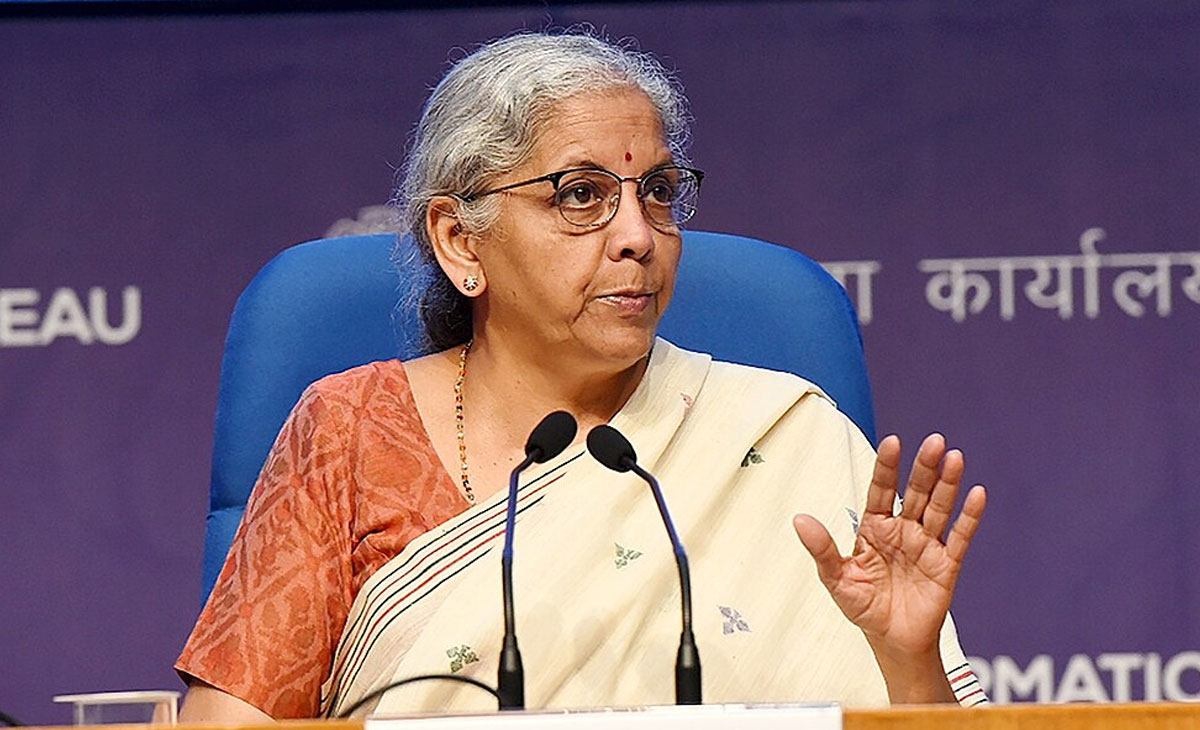Finance minister tables white paper on state of Indian economy before and after 2014
10 Feb 2024

Finance minister Nirmala Sitharaman on Thursday tabled a 'white paper on the Indian economy' detailing the state of the economy prior to 2014 and after, when the Narendra Modi-led government came to power at the centre.
The white paper tries to explain how the NDA government successfully used adversity of a crisis-hit economy to achieve a turnaround in the country’s fortunes by reversing the UPA government’s wrong policies.
The finance minister had, while presenting the annual budget in Parliament, announced that the government would come out with a white paper on the state of the economy before and after the 2014 elections.
"The NDA government has overcome the crisis of those years, and the economy has been put firmly on a high sustainable growth path with all-round development,” says the document.
“It is now appropriate to look at where we were then till 2014 and where we are now, only for the purpose of drawing lessons from the mismanagement of those years," it adds.
As the white paper puts it, the UPA leadership abandoned the 1991 reforms initiative after coming to power in 2004.
Also, in its attempt to project high economic growth by any means in the aftermath of the 2008 global financial crisis, the UPA regime severely undermined the country’s macroeconomic foundations.
Inflation peaked during the five years ending 2014, with annual rate of inflation reaching double digits during the period from FY2010 to FY2014. Between FY04 and FY14, the average annual inflation was 8.2%.
Gross advances by public sector banks grew from Rs6.6 lakh crore in March 2004 to Rs39.0 lakh crore in March 2012 while gross non-performing assets of public sector banks rose from 7.8 per cent to 12.3 per cent of total advances between 2004 and 2013.
Also, an uncontrolled rise in external commercial borrowings resulted in an over-dependence on foreign capital, increasing India’s external vulnerability. During the UPA government's tenure, ECB rose at a compounded annual growth rate (CAGR) of 21.1 per cent from FY04 to FY14.
Against this, ECB growth came down to an average 4.5 per cent in the nine years from FY14 to FY23, the white paper points out.
The Indian currency also lost much of its value against the US dollar during the 2011-13 period, plunging nearly 36 per cent.
Gross fiscal deficit of the country as a per cent of its gross domestic product also hovered around 4.5 per cent for six consecutive years beginning the 2008-09 financial year.
The UPA government failed in properly implementing social sector schemes, resulting in wastage of 94,000 crore of plan funds – about 6.4 per cent of total budget estimates - between FY 2004 and FY 2014. Against this the portion of unspent budget allocation during the 10 years of the NDA government, ie, between FY 2014 and FY 2024, comes to Rs37,064 crore, which is less than 1 per cent of the cumulative budget estimate, the white paper claims.
The white paper also recalls the policy misadventures and scams like coal and telecom spectrum scams, retrospective taxation, unsustainable demand stimulus and ill-targeted subsidies and reckless lending by the banking sector etc.
The 80:20 gold export-import scheme launched by the UPA government only resulted in a subversion of government systems and procedures by vested interests for making pecuniary gains, the white paper points out.
The introduction of Aadhaar by the UPA government in 2006 was a half-hearted measure, which led to the neglect of the idea of a ‘multipurpose national card’ to be issued based on a National Register of Indian Citizens, as proposed by the Vajpayee-led NDA government. The Aadhaar cards issued under the UPA government were also replete with duplication and illegitimate certification by agencies involved in the registration, the white paper points out.
The UPA government failed to capitalise on the strong fundamentals of the economy and neglected opportunities for technology-led innovation. The 2G scam slowed the subsequent introduction of 3G and 4G telecom spectrum, resulting in loss pace of reforms and the accumumulation of losses by state-run telecom companies.
Valuation addition and economic growth declined to levels so low in 2012-13 that Morgan Stanley placed India among 'Fragile Five' – a group comprising emerging economies with weak macroeconomic fundamentals.
While it took the country 10 years to grow from 12th largest among global economies in 2004 to the 10th largest in 2014, under the NDA government, the Indian economy climbed five places to reach the 5th position in less than 10 years, according to ythe white paper.
The white paper also highlights the pace of infrastructure development and the growth of the digital economy under the NDA government to blame the UPA for the missed opportunities.






















